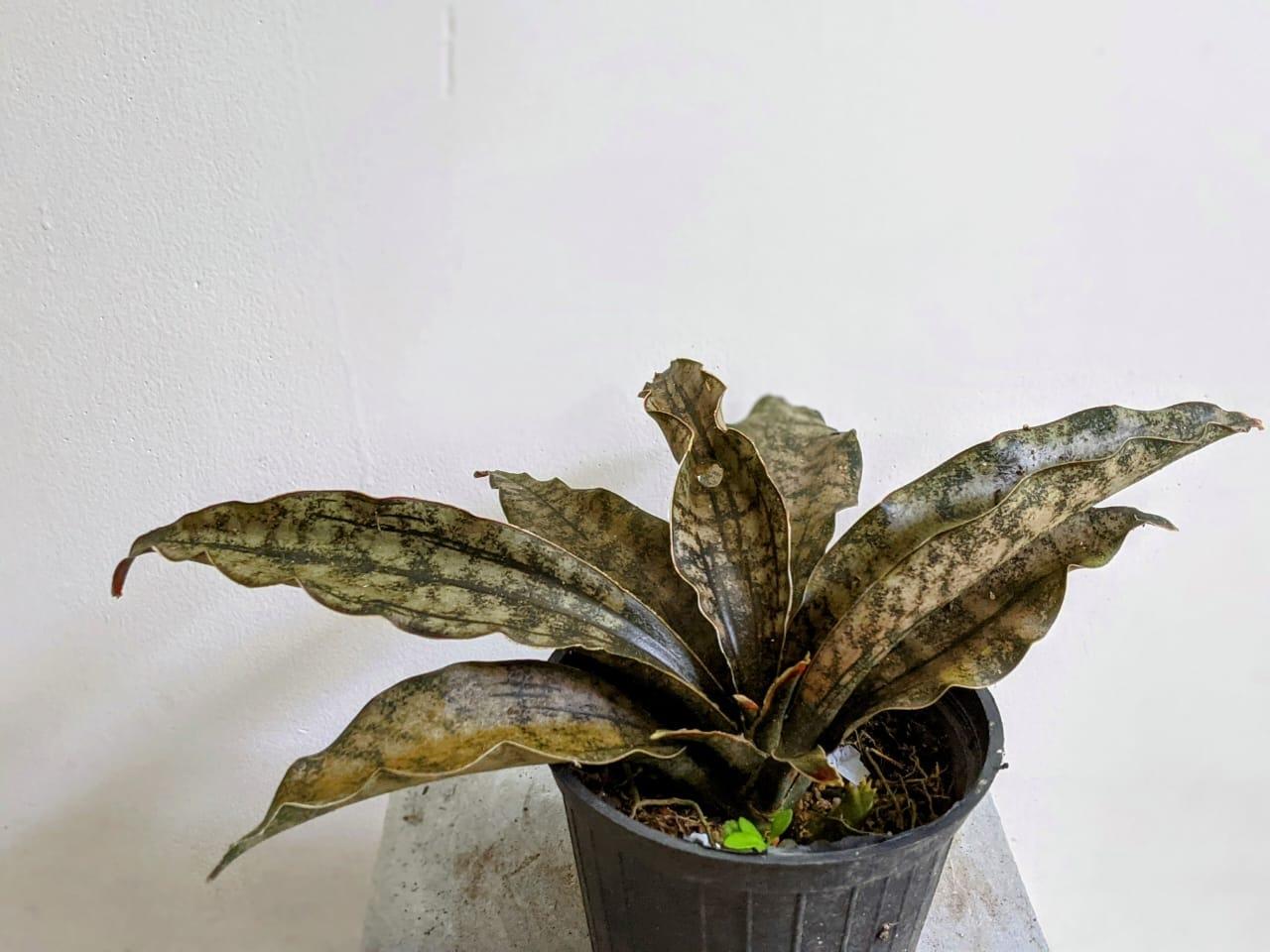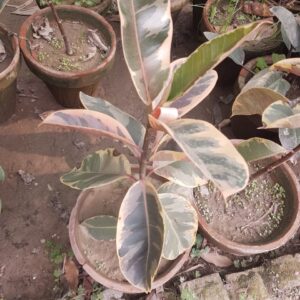Coppertone is the striking metallic beauty of the snake plant ‘Coppertone’ (Sansevieria Coppertone).
The uncommon, architectural houseplant Sansevieria ‘Coppertone,’ often called Coppertone Snake Plant, is valued for its beautiful bronze-copper foliage and upright, sword-like leaves. Although it is less prevalent than the traditional green Sansevieria trifasciata, this variety has become popular among designers and collectors due to its sculptural appearance, distinctive color, and minimal maintenance needs.
Like all snake plants, Coppertone tolerates a wide range of environments, flourishes with neglect, and is ideal for busy lifestyles, travelers, or novices. It’s a great option for houses, offices, or any place where air filtration, style, and longevity are paramount.
Overview
Sansevieria Coppertone is the botanical name (it might also be classified under the genus Dracaena).
Frequent names include Bronze Snake Plant and Coppertone Snake Plant.
Succulent evergreen perennial is the plant type.
Generally between 12 and 24 inches (30 and 60 centimeters) in height.
Distribution: 6–12 inches (15–30 cm)
Foliage: Rigid, erect, lance-shaped leaves with a noticeable bronze or copper hue, occasionally bordered by green or dark brown.
Growing habit: Forms clumps from subterranean rhizomes
💧 Watering Schedule
Due to its thick leaves that hold water, the Coppertone Snake Plant is very drought-tolerant.
Water every two to three weeks during the spring and summer.
Water once every four to six weeks, or less, throughout the fall and winter.
Always: Between waterings, let the soil dry out completely.
Overwatering symptoms include root rot, yellowing, and soft or mushy leaves.
Signs of underwatering include leaves that are wrinkled or curling (rare due to its drought tolerance).
Tip: To prevent leaf rot, try bottom watering, which involves submerging the pot in a low dish of water for 10 to 15 minutes.
Requirements for Temperature and Light
Although Coppertone Sansevieria flourishes under a variety of lighting circumstances, the copper hue is at its most vibrant under moderate to bright indirect light.
Light:
Works best in bright, indirect light.
Although it can survive in low light, its leaves may become darker green and lose their copper color.
Able to withstand some direct sunshine, particularly in the morning. Avoid the midday sun, which is harsh and may burn leaves.
Temperature:
Best range: 18 to 27°C (65 to 80°F)
Minimum: 10°C (50°F)
Frost-intolerant. If the temperature falls below 10°C, go inside.
Humidity: Flexible; there are no particular humidity needs.
Requirements for fertilizer and soil
Soil:
Needs a gritty soil combination that drains well.
Add perlite, sand, or pumice to ordinary potting soil, or use a mixture of cacti and succulents.
pH: Between neutral and somewhat acidic (6.0–7.0)
Fertilizer:
Apply a diluted liquid succulent fertilizer once a month throughout the growing season (spring through summer).
During the fall and winter, when development decelerates, cease fertilization.
Do not overfeed, as this can result in salt accumulation and root damage.
Maintenance & Pruning
Coppertone requires very little maintenance:
With clean shears, cut off any dead or broken leaves at the base.
To get rid of dust and maintain the metallic hue, use a moist cloth to wipe the leaves.
Repotting: When roots are bound or every 2–3 years. Sansevierias enjoy a tight fit in their pots.
Terra cotta pots can aid with drainage and breathability while also helping to prevent overwatering.
Methods of Propagation
The following methods may be used to propagate Sansevieria Coppertone:
Division (The most effective technique for maintaining color):
Take the plant out of the container and carefully divide rhizomes.
Every division must have at least one healthy leaf and root system.
Repot in dry soil and wait a few days before watering.
Leaf clippings (may lose copper colour):
Slice a healthy leaf into portions between three and four inches.
Allow them to dry (callous) for two to three days.
Put in soil that drains well and water gently.
Offspring from cuttings frequently revert to green.
🍃 Air Quality and Safety
Air Purifying: Similar to other snake plants, Coppertone is well-known for its ability to remove pollutants such as formaldehyde, xylene, and benzene from the air.
Toxicity: If consumed, it has little toxicity to household animals such cats and dogs. May result in drooling, vomiting, or nausea.
Tips for Styling and Displaying
Due to its sculptural shape, it is perfect for contemporary, minimalist interiors.
Ideal for bedrooms, offices, or shady balconies.
Pair with copper-toned containers or black pots to emphasize the leaf hue.
Ideal for low-maintenance plant groups that include pothos and ZZ plants.
✅ Conclusion
The magnificent Sansevieria ‘Coppertone’ combines beauty, robustness, and simplicity. It makes a beautiful accent plant because of its metallic leaves, upright shape, and great hardiness, and it requires very little care. Coppertone adds a rare and earthy refinement to any room and is perfect for both novice and experienced collectors.”
Snake Plant – Sansevieria Coppertone
₨1,500.00
The distinctive and striking type of snake plant known as the Coppertone Snake Plant is the **Sansevieria ‘Coppertone’**, which is distinguished by its leathery leaves that range from coppery bronze to deep green. Its leaves are a rich, warm hue that sets it apart from the majority of snake plants and makes it stand out in any interior environment. This resilient succulent needs very little attention, flourishing in low to bright indirect light and only needs watering once in a while. It is ideal for enhancing indoor air quality since it is drought-resistant and pest-resistant. The Coppertone Snake Plant, which is ideal for contemporary interiors, office desks, or shady patios, gives your plant collection a touch of color and sculptural form.
Related products
-
Dining Room Plants
Monstera deliciosa
Rated 0 out of 5₨3,000.00Original price was: ₨3,000.00.₨2,500.00Current price is: ₨2,500.00. -
Bedroom Plants
Ficus Elastica | Rubber Plant | Variegated
Rated 0 out of 5₨1,800.00Original price was: ₨1,800.00.₨1,500.00Current price is: ₨1,500.00.





Reviews
There are no reviews yet.